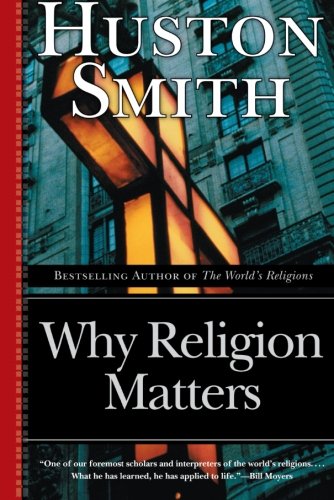Why Religion Matters: The Fate of the Human Spirit in an Age of Disbelief
Huston Smith, the author of the classic bestseller The World’s Religions, delivers a passionate, timely message: The human spirit is being suffocated by the dominant materialistic worldview of our times. Smith champions a society in which religion is once again treasured and authentically practiced as the vital source of human wisdom. Why Religion Matters is
Huston Smith, the author of the classic bestseller The World’s Religions, delivers a passionate, timely message: The human spirit is being suffocated by the dominant materialistic worldview of our times. Smith champions a society in which religion is once again treasured and authentically practiced as the vital source of human wisdom.
Why Religion Matters is a passionate, accessible, ambitious manifesto written by one of the very few people qualified to address its titular topic. Huston Smith is the grand old man of religious scholarship. Raised by missionary parents in China, Smith went on to teach at M.I.T. and U.C. Berkeley, among others, and his World’s Religions has long been the standard introductory textbook for college religion courses. The subject of Why Religion Matters, Smith writes, “is the importance of the religious dimension of human life–in individuals, in societies, and in civilizations.” Smith believes that the religious dimension of human life has been devalued by the rise of modern science: we have now reached a point at which “modern Westerners . . . forsaking clear thinking, have allowed ourselves to become so obsessed with life’s material underpinnings that we have written science a blank check … concerning what constitutes knowledge and justified belief.” In candid, direct style, Smith describes the evolution of intellectual history from pre-modern to postmodern times, and the spiritual sensibilities that have been shunted “by our misreading of modern science.” In the book’s final sections, Smith avoids the folly of predicting the future, instead focusing on “features of the religious landscape that are invariant” and therefore may serve as “a map that can orient us, wherever the future may bring.” This book is fresh, insightful, and important. It may prove to be as influential in shifting readers’ terms of religious understanding as any of Smith’s previous writings. –Paul Power







Comments